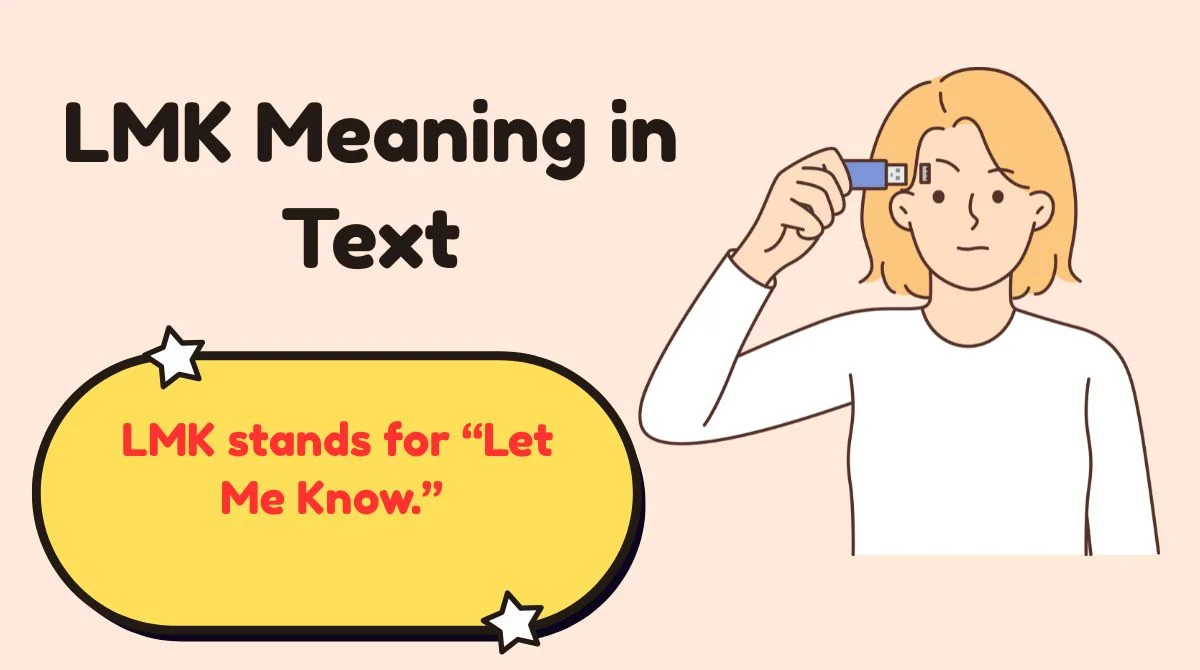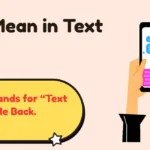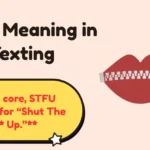Texting culture has its own dictionary. Acronyms, abbreviations, and shortcuts shape the way we communicate online and on our phones. One of the most common you’ve probably seen (or used yourself) is “LMK.”
But what does LMK mean in text? Is it always okay to use, or are there times it can sound unprofessional? More importantly, what can you say instead when “LMK” doesn’t quite fit?
This guide breaks it all down — from the true meaning and origin of LMK, to tone nuances, common mistakes, practical alternatives, and tips for using it correctly in everyday communication.
Why “LMK” Pops Up Everywhere in Texts
Picture this: you’re texting a friend about weekend plans. You don’t want to overload them with a long message, so you type, “LMK what time works.” Quick. Easy. Efficient.
That’s the beauty of LMK — it saves time while still getting your point across. But not everyone feels the same about acronyms. For some, these shortcuts can seem too casual, even confusing if they’re not familiar with them.
Understanding what LMK means in text and how to use it can help you avoid misunderstandings and make your messages sound natural and respectful, no matter who you’re writing to.
What Does LMK Mean in Text?
At its core, LMK stands for “Let Me Know.” It’s a short, simple request for someone to provide information, feedback, or a decision.
-
Example (Casual):
“LMK if you’re coming to the party tonight.” -
Example (Work):
“LMK if you’ll have the report ready by Monday.”
The acronym became popular in the early 2000s, spreading alongside the rise of SMS texting, AIM chatrooms, and eventually, social media platforms like Twitter and Instagram. It’s part of the texting shorthand culture that includes terms like BRB, IDK, and IMO.
Today, LMK is widely recognized across all age groups, but its meaning remains the same: it’s a quick way of asking someone to keep you updated.
Is LMK Formal or Informal?
Here’s where things get interesting. While LMK isn’t inherently rude, it does lean toward casual communication.
- Where it works: texting friends, group chats, casual emails, Slack or Teams messages between colleagues.
- Where it doesn’t: professional job applications, business proposals, or client-facing communication.
Think of LMK as a tool. It’s not wrong, but it’s not always the right tool for the job.
Comparison to Other Acronyms:
| Acronym | Meaning | Formality | Best Use Case |
|---|---|---|---|
| LMK | Let me know | Casual-neutral | Quick updates, reminders |
| FYI | For your information | Neutral | Sharing info at work |
| BRB | Be right back | Casual | Chatting with friends |
| IMO | In my opinion | Casual | Social media, friendly debates |
Key takeaway: Use LMK in spaces where brevity is expected, but choose more polished wording in formal or professional contexts.
Nuances Behind LMK and Tone
Tone in texting is tricky. Without body language or vocal cues, acronyms like LMK can be read in different ways.
- Polite/Neutral: “LMK if you need anything.”
- Impatient: “LMK ASAP.”
- Dismissive: “Whatever, LMK.”
Notice how the extra words around “LMK” change its tone? That’s why you need to think about context. Adding phrases like “please” or “when you can” softens the message and makes it more respectful.
Popular Alternatives to LMK (Based on Context & Tone)
Sometimes, you’ll want to say more than just LMK. Here are better alternatives broken down into categories.
Professional Alternatives
When you need to sound clear, respectful, and polished:
- Please let me know
- Keep me posted
- Update me when you can
- Reach out to me
- Touch base with me
Case Study:
A project manager emailing a client about deadlines would never type “LMK.” Instead, they’d write, “Please let me know if the timeline works for you.” It conveys professionalism without sounding robotic.
Friendly or Casual Alternatives
Perfect for friends, family, or informal chats:
- Get back to me
- Drop me a message
- Ping me when you’re ready
- Let’s reconnect soon
- Let me hear from you
These keep the tone warm and open-ended, making your texts feel more human.
Polite/Formal Alternatives
When you want to show respect, even in quick communication:
- I’d appreciate a response
- Circle back with me
- I’d love your thoughts
These alternatives soften your request and show thoughtfulness, which can go a long way in professional or academic settings.
Choosing the Best Alternative: A Quick Guide
Not sure which phrase to use instead of LMK? Use this table as a guide:
| Phrase | Best For | Tone | Example |
|---|---|---|---|
| LMK | Friends, colleagues | Casual-neutral | “LMK if you’re free Friday.” |
| Please let me know | Work, clients | Polite-formal | “Please let me know your availability.” |
| Keep me posted | Ongoing projects | Neutral | “Keep me posted on the updates.” |
| Ping me | Tech/work chats | Casual | “Ping me when the server is back online.” |
| I’d love your thoughts | Collaboration | Warm/professional | “I’d love your thoughts on this proposal.” |
When LMK Still Works Best
Despite its casual nature, LMK is often the fastest and most effective option.
- Quick group texts: “LMK if you’re in for dinner.”
- Friendly reminders: “LMK when you’re done so I can call.”
- Social media comments: “Cool idea, LMK how it turns out!”
In short, LMK thrives in informal, real-time communication where speed matters more than polish.
Common Mistakes to Avoid with LMK
Even though it’s simple, people misuse LMK all the time. Here are mistakes to watch for:
- Overusing it in every message (it starts to feel lazy).
- Using it in formal emails (can seem unprofessional).
- Dropping it without context (can feel abrupt).
- Assuming everyone knows it (some older professionals may not).
Pro tip: Add context or politeness markers (“please,” “when you have time”) to soften the edges of LMK.
Related Acronyms You Should Know
LMK is part of a larger world of shorthand. Here are some related acronyms you’ll often see with it:
- BRB – Be right back
- IMO/IMHO – In my (humble) opinion
- FYI – For your information
- IDK – I don’t know
- TTYL – Talk to you later
Understanding these makes your digital communication smoother and helps you avoid awkward moments.
FAQs About LMK
What does LMK stand for in text?
It stands for “Let Me Know.” It’s a request for information, feedback, or a decision.
Can you use LMK in professional emails?
Not usually. In formal settings, use alternatives like “Please let me know” or “Keep me posted.”
Is LMK rude or dismissive?
On its own, no. But tone matters. Add phrases like “please” or “when you can” to keep it polite.
Do older generations understand LMK?
Not always. While it’s widely used, some people outside texting culture might find it confusing.
What are better alternatives to LMK?
Alternatives include “Please let me know,” “Update me when you can,” “Drop me a message,” and “I’d love your thoughts.”
Final Takeaway: LMK Is Handy, But Context Is Key
LMK has earned its place in texting and online culture. It’s short, versatile, and easy to use. But like any tool, it’s best when applied in the right context.
- Use it casually with friends, coworkers, or on social media.
- Swap it out for alternatives in professional or formal communication.
- Always pay attention to tone, audience, and context.
In the end, communication isn’t just about saving time — it’s about making connections. And knowing when to use LMK versus when to say more can help you strike the right balance.











